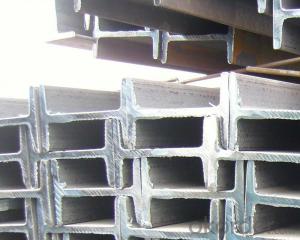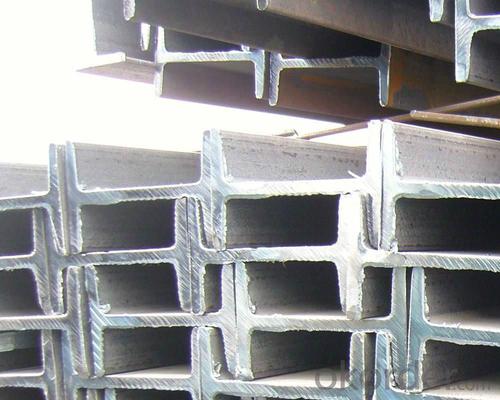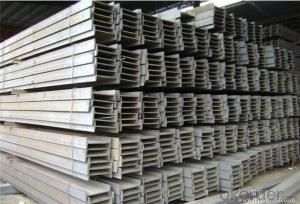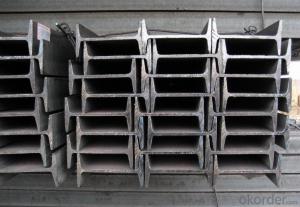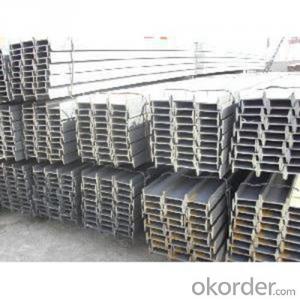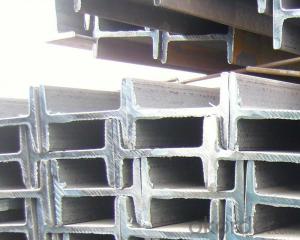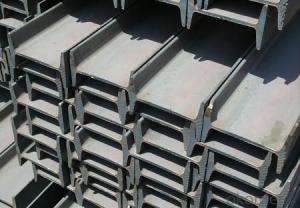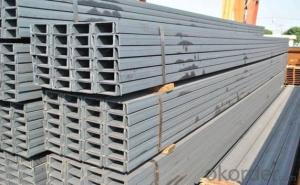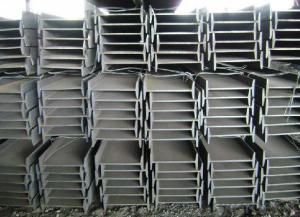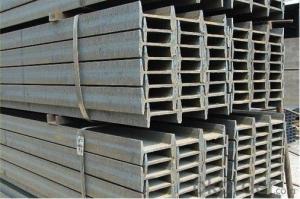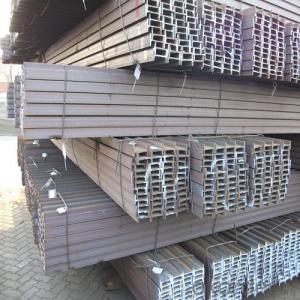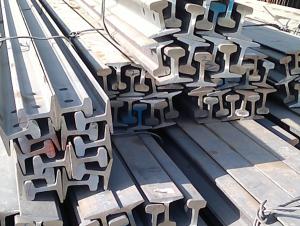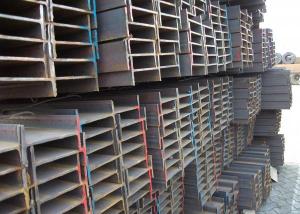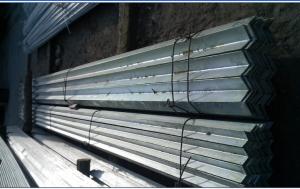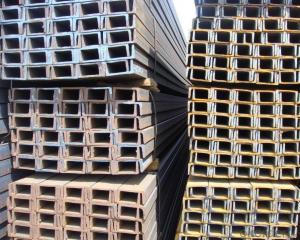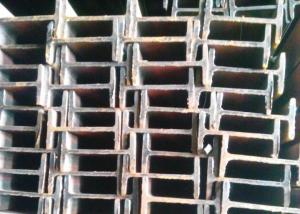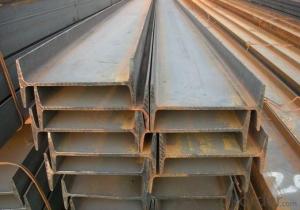IPEAA High Quality Hot Rolled 80MM-270MM S235JR
- Loading Port:
- Tianjin
- Payment Terms:
- TT or LC
- Min Order Qty:
- 25 m.t.
- Supply Capability:
- 10000 m.t./month
OKorder Service Pledge
OKorder Financial Service
You Might Also Like
Product Applications:
High Quality Hot Rolled IPEAA 80MM-270MM S235JR are ideal for structural applications and are widely used in the construction of buildings and bridges, and the manufacturing, petrochemical, and transportation industries.
Product Advantages:
OKorder's High Quality Hot Rolled IPEAA 80MM-270MM S235JR are durable, strong, and resist corrosion.
Main Product Features:
· Premium quality
· Prompt delivery & seaworthy packing (30 days after receiving deposit)
· Corrosion resistance
· Can be recycled and reused
· Mill test certification
· Professional Service
· Competitive pricing
Product Specifications:
Manufacture: Hot rolled
Grade: Q195 – 235
Certificates: ISO, SGS, BV, CIQ
Length: 6m – 12m, as per customer request
Packaging: Export packing, nude packing, bundled
Chinese Standard (H*W*T) | Weight (Kg/m) | 6m (pcs/ton) | Light I (H*W*T) | Weight (Kg/m) | 6m (pcs/ton) | Light II (H*W*T) | Weight (Kg/m) | 6M |
100*68*4.5 | 11.261 | 14.8 | 100*66*4.3 | 10.13 | 16.4 | 100*64*4 | 8.45 | 19.7 |
120*74*5.0 | 13.987 | 11.9 | 120*72*4.8 | 12.59 | 13.2 | 120*70*4.5 | 10.49 | 15.8 |
140*80*5.5 | 16.89 | 9.8 | 140*78*5.3 | 15.2 | 10.9 | 140*76*5 | 12.67 | 13.1 |
160*88*6 | 20.513 | 8.1 | 160*86*5.8 | 18.46 | 9 | 160*84*5.5 | 15.38 | 10.8 |
180*94*6.5 | 24.143 | 6.9 | 180*92*6.3 | 21.73 | 7.6 | 180*90*6 | 18.11 | 9.2 |
200*100*7 | 27.929 | 5.9 | 200*98*6.8 | 25.14 | 6.6 | 200*96*6.5 | 20.95 | 7.9 |
220*110*7.5 | 33.07 | 5 | 220*108*7.3 | 29.76 | 5.6 | 220*106*7 | 24.8 | 6.7 |
250*116*8 | 38.105 | 4.3 | 250*114*7.8 | 34.29 | 4.8 | 250*112*7.5 | 28.58 | 5.8 |
280*122*8.5 | 43.492 | 3.8 | 280*120*8.2 | 39.14 | 4.2 | 280*120*8 | 36.97 | 4.5 |
300*126*9 | 48.084 | 3.4 | 300*124*9.2 | 43.28 | 3.8 | 300*124*8.5 | 40.87 | 4 |
320*130*9.5 | 52.717 | 3.1 | 320*127*9.2 | 48.5 | 3.4 | |||
360*136*10 | 60.037 | 2.7 | 360*132*9.5 | 55.23 | 3 |
FAQ:
Q1: Why buy Materials & Equipment from OKorder.com?
A1: All products offered byOKorder.com are carefully selected from China's most reliable manufacturing enterprises. Through its ISO certifications, OKorder.com adheres to the highest standards and a commitment to supply chain safety and customer satisfaction.
Q2: What makes stainless steel stainless?
A2: Stainless steel must contain at least 10.5 % chromium. It is this element that reacts with the oxygen in the air to form a complex chrome-oxide surface layer that is invisible but strong enough to prevent further oxygen from "staining" (rusting) the surface. Higher levels of chromium and the addition of other alloying elements such as nickel and molybdenum enhance this surface layer and improve the corrosion resistance of the stainless material.
Q3: Can stainless steel rust?
A3: Stainless does not "rust" as you think of regular steel rusting with a red oxide on the surface that flakes off. If you see red rust it is probably due to some iron particles that have contaminated the surface of the stainless steel and it is these iron particles that are rusting. Look at the source of the rusting and see if you can remove it from the surface.
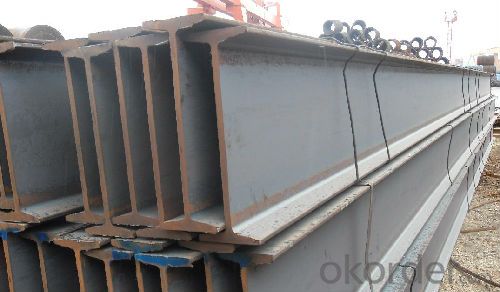
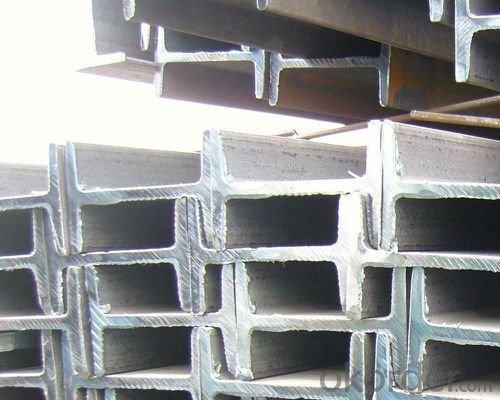
- Q: Can steel I-beams be used in foundation or basement construction?
- Indeed, foundation or basement construction can incorporate steel I-beams. The utilization of steel I-beams is widespread in the construction industry, owing to their robustness and longevity. Particularly in regions where soil conditions are unstable or when substantial loads necessitate support, they can offer exceptional reinforcement for foundation or basement walls. Furthermore, steel I-beams possess resistance against rot, pests, and moisture, rendering them an optimal selection for basement construction. Nevertheless, it is vital to seek guidance from a structural engineer or construction expert to ascertain the suitable dimensions and positioning of the steel I-beams, taking into account the specific demands and circumstances of the building.
- Q: How are steel I-beams repaired if damaged?
- Steel I-beams are typically repaired if they are damaged by following a specific set of steps. The first step in repairing a damaged steel I-beam is to assess the extent of the damage. This is usually done by a trained professional who examines the beam to determine the severity and location of the damage. Once the damage has been assessed, the next step is to stabilize the beam. This is done by using temporary supports or braces to ensure that the beam is secure and will not collapse during the repair process. This is crucial to ensure the safety of the workers and prevent further damage. After stabilizing the beam, the damaged section needs to be removed. This is often done by cutting out the damaged portion of the beam using cutting tools such as torches or saws. It is important to remove all the damaged material to ensure a proper repair. Once the damaged section has been removed, a new piece of steel is usually fabricated to replace the damaged section. This replacement piece is then carefully welded or bolted into place using specialized techniques and equipment. The welding process is crucial to ensure a strong and durable repair. After the new section is securely attached, the repaired I-beam is often inspected to ensure the quality of the repair. This inspection may involve non-destructive testing methods such as ultrasound or x-ray to detect any potential defects or weaknesses. Finally, if necessary, the repaired I-beam may be painted or treated to protect it from corrosion and extend its lifespan. In summary, repairing a damaged steel I-beam involves assessing the damage, stabilizing the beam, removing the damaged section, fabricating and attaching a new section, inspecting the repair, and potentially painting or treating the beam. This process requires skilled professionals and specialized equipment to ensure a safe and effective repair.
- Q: Can steel I-beams be used in airport terminal construction?
- Indeed, airport terminal construction does make use of steel I-beams. These beams, renowned for their strength and durability, are widely employed in the construction industry. They offer a robust framework capable of bearing heavy loads and enduring the structural requirements of extensive undertakings like airport terminals. Furthermore, steel possesses fire-resistant properties and can be conveniently fabricated and erected on-site, rendering it a pragmatic selection for projects with stringent timelines. By incorporating steel I-beams into airport terminal construction, the structure's safety and stability are assured, all the while permitting flexibility in design and construction approaches.
- Q: Can steel I-beams be used for curtain wall systems?
- Yes, steel I-beams can be used for curtain wall systems. Curtain wall systems are typically used in commercial buildings to provide an external façade and support the weight of the building. Steel I-beams are commonly used in curtain wall systems because they have high load-bearing capabilities and can withstand the forces exerted on the building. The I-beams provide structural support and can be designed to accommodate the weight of the curtain wall panels, glass, and other components. Additionally, steel I-beams offer durability and resistance to weather conditions, making them suitable for use in curtain wall systems.
- Q: Can Steel I-Beams be used for conveyor systems?
- Yes, steel I-beams can be used for conveyor systems. I-beams provide strength, stability, and durability, making them suitable for supporting heavy loads and withstanding the demands of conveyor operations.
- Q: What are the common finishes for steel I-beams?
- There are various finishes available for steel I-beams, including hot-dip galvanizing, priming and painting, and powder coating. Hot-dip galvanizing is a method that involves coating the steel I-beam with zinc, which protects it against corrosion and ensures its durability. This finish is commonly used in outdoor applications where the I-beam will be exposed to moisture or harsh environmental conditions. Another option is priming and painting, which entails applying a layer of primer to the surface of the I-beam to enhance adhesion, followed by one or more coats of paint. This not only provides a protective barrier against corrosion but also allows for customization in terms of color and appearance. Powder coating is a different finish that entails electrostatically applying a dry powder onto the I-beam's surface. The powder is then cured under heat, resulting in a strong and long-lasting finish. Powder coating offers excellent corrosion resistance, as well as a wide range of color options and a smooth, even appearance. It is important to consider the specific requirements of the application when choosing a finish for steel I-beams. Factors such as the environment, aesthetic preferences, and level of corrosion resistance needed should all be taken into account.
- Q: What are the considerations for connecting steel I-beams to concrete structures?
- When connecting steel I-beams to concrete structures, several considerations must be taken into account. Firstly, the appropriate connection method should be selected based on factors such as the load conditions, structural design, and construction requirements. It is crucial to ensure proper load transfer and structural integrity while considering factors like shear, moment, and torsion. Secondly, the connection design should consider the compatibility between the steel and concrete materials. This includes addressing potential differential movements between the two materials due to thermal expansion, shrinkage, or other factors. Adequate detailing and provision of expansion joints or flexible connections can mitigate these concerns. Thirdly, corrosion protection measures need to be implemented to prevent the steel I-beams from rusting or corroding when in contact with the concrete. This can include the use of protective coatings, galvanization, or the application of concrete cover to the steel elements. Lastly, the construction process should be planned to ensure proper installation and connection of the steel I-beams to the concrete structure. This may involve coordinating with other trades, such as concrete placement and formwork, to ensure accurate positioning and alignment of the beams. Overall, connecting steel I-beams to concrete structures requires careful consideration of load transfer, material compatibility, corrosion protection, and proper construction practices to ensure a safe and durable connection.
- Q: What are the different types of steel I-beams?
- There exists a variety of steel I-beams, each designed to fulfill specific structural needs and requirements. Some of the most prevalent types include: 1. W-Beam: The most commonly utilized I-beam, it features a wide flange section resembling the letter "W". It offers exceptional support and load-bearing capabilities, allowing for a wide range of applications. 2. S-Beam: Also known as American Standard Beams, S-beams possess a narrower flange section resembling the letter "S". They find common usage in residential construction and light to medium-duty applications. 3. HP-Beam: HP-beams, or H-piles, showcase a wider flange section and are predominantly employed in deep foundation applications, such as supporting large structures or bridges. They exhibit excellent load-bearing capacity and resistance to lateral forces. 4. M-Beam: M-beams, or miscellaneous beams, typically cater to smaller-scale applications or situations necessitating specific load requirements. They come in various sizes and are frequently employed in the construction industry for framing, support structures, and similar applications. 5. L-Beam: L-beams, also known as angle beams, consist of two legs forming an L-shape. Primarily used for structural purposes, they provide support for columns, beams, or act as braces in construction projects. 6. C-Beam: C-beams, or channel beams, feature a C-shaped cross-section and are commonly utilized for structural purposes, such as framing, support, or as tracks for sliding doors or windows. These examples represent only a fraction of the diverse steel I-beams available. It is crucial to select the appropriate type based on project-specific requirements, including load-bearing capacity, span, and structural needs. Consulting with a structural engineer or steel supplier can aid in determining the most suitable I-beam type for a particular application.
- Q: How much weight can steel I-beams support?
- The weight capacity of steel I-beams depends on various factors, including the beam's size, shape, and material composition, as well as the length of the span and how the load is distributed. Due to their strength and ability to bear heavy loads, steel I-beams are commonly used in construction. They can support weights ranging from a few hundred pounds to several tons. Determining the exact weight capacity of a steel I-beam involves complex calculations and considerations by structural engineers. They take into account factors such as the bending moment, shear force, and deflection. These calculations ensure that the beam can safely handle the intended load without experiencing excessive stress or deformation. To obtain accurate and precise weight capacity information, it is crucial to consult a qualified structural engineer or refer to the relevant design codes and standards. These professionals can analyze the specific requirements of the project and consider all relevant variables to determine the appropriate size and configuration of the steel I-beam needed to safely support the desired weight.
- Q: Can steel I-beams be used for underground structures?
- Yes, steel I-beams can be used for underground structures. Steel is a versatile and durable material that can withstand a wide range of environmental conditions, including being buried underground. Steel I-beams are commonly used in the construction industry for their strength and load-bearing capabilities, making them suitable for various applications, including underground structures. When using steel I-beams for underground structures, several factors need to be considered. Firstly, the steel beams should be properly treated and coated to protect them from corrosion caused by moisture and soil chemicals. This can be done through galvanization or applying epoxy coatings. Additionally, proper drainage systems should be in place to prevent water accumulation, which could accelerate corrosion. Steel I-beams can be used in underground structures such as basements, tunnels, underground parking lots, and even underground mining operations. They provide structural support and can handle heavy loads, making them a suitable choice for these applications. Moreover, steel beams can be easily fabricated and customized to meet specific design requirements, offering flexibility in designing underground structures. It is important to note that engineering expertise and careful planning are crucial when using steel I-beams for underground structures. Factors such as soil conditions, water table levels, and the overall design and purpose of the structure need to be considered to ensure the safety and longevity of the underground construction. Consulting with structural engineers and architects experienced in underground construction is highly recommended to ensure the proper and safe use of steel I-beams in these applications.
Send your message to us
IPEAA High Quality Hot Rolled 80MM-270MM S235JR
- Loading Port:
- Tianjin
- Payment Terms:
- TT or LC
- Min Order Qty:
- 25 m.t.
- Supply Capability:
- 10000 m.t./month
OKorder Service Pledge
OKorder Financial Service
Similar products
Hot products
Hot Searches
Related keywords
